Contents
Intro and backgroundCurrent version (4.0): Disability Pride Cloud, a nimbostratus cloud
Why a cloud?
Previous Versions
• Version 4.0 - why a nimbostratus cloud?
Why a disability pride symbol in the first place?
Should it be a “Disability Pride & _” cloud?
Personal note
Summary/TL;DR
Footnotes
Comments
Intro and background
As you might have guessed from the title, this is a page about creating a symbol to fill a niche in the symbolism for disability, disability pride and disability pride month.
This is a project I’ve been working on on and off for nearly two years, and I thought that this year’s disability pride month, July 2022, would be a good time to start part two - talking about it with others. I’m just one person, not a whole community - after the brainstorming (no pun intended) and iterating I’ve done to get to Version 4.0 of this cloud, I thought was ready to share with others in the disability community and ask for advice and feedback.
Some existing symbols of disability and disability pride are the International Symbol of Access (the ubiquitous blue and white wheelchair figure, both original flavor and as redesigned by the Accessible Icon Project),¹ the Disability Flag created by Eros Recios in 2017, and the Disability Pride Flag created by Ann Magill in 2019. My idea is not to replace any of these but to fill what I think is an additional niche.
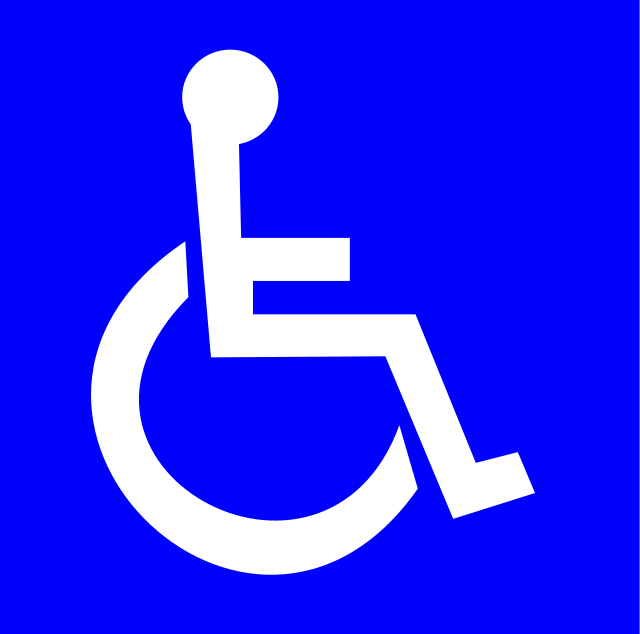
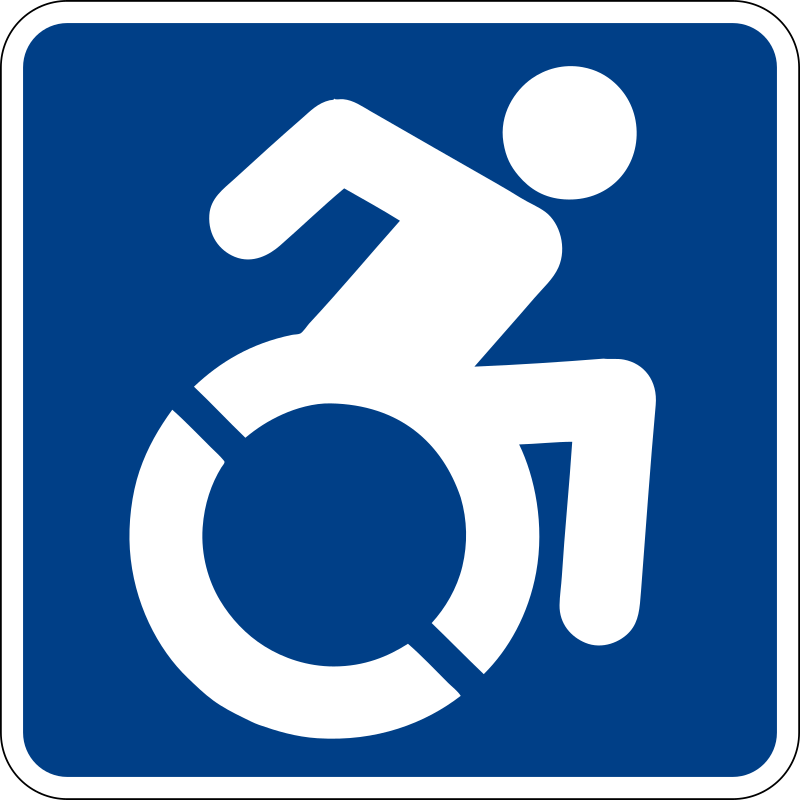
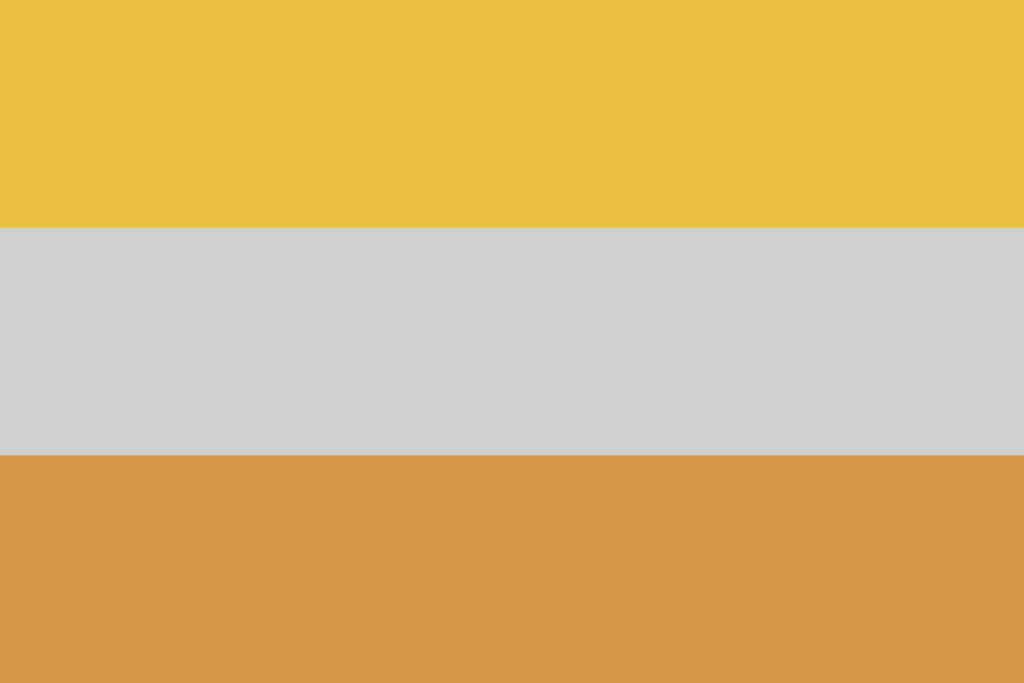
Disability Flag created by Eros Recios

Disability Pride Flag created by Ann Magill
If people like the idea of a disability pride symbol (one of the sections of this page is about concerns with creating a symbol like this at all), I’ll create a final version to release into public domain or with a Creative Commons license for free commercial and personal use, and post vector and raster images for anyone to use. If it works out, I’m also planning to silkscreen some shirts with this on it (and would be very excited if other people made stuff with it as well.)²
As well as pestering friends to spread the word that this project is looking for feedback, I’m planning to ask for feedback on social media. I don’t have much social media - I created a Reddit account to potentially post it there, and Tumblr obviously has a lot of discussion potential for anything at the intersection of disability and graphic design - so if anyone wants to share it with friends or on your own social media I would be much obliged! This neocities page exists to be a home base with details and a space for comments.
Current version (4.0): Disability Pride Cloud, a nimbostratus cloud
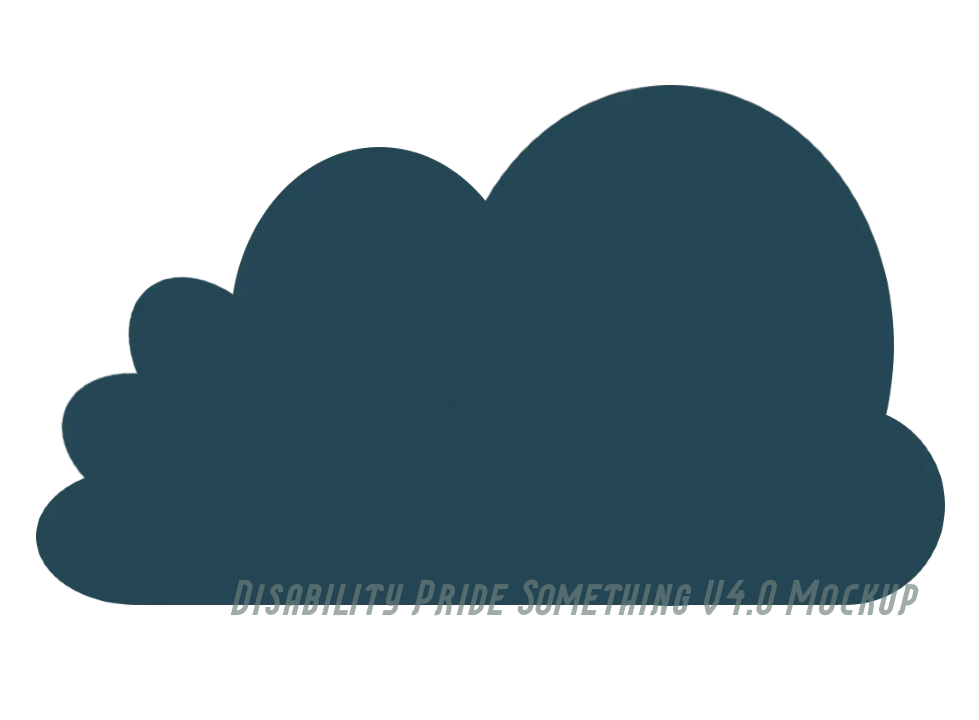
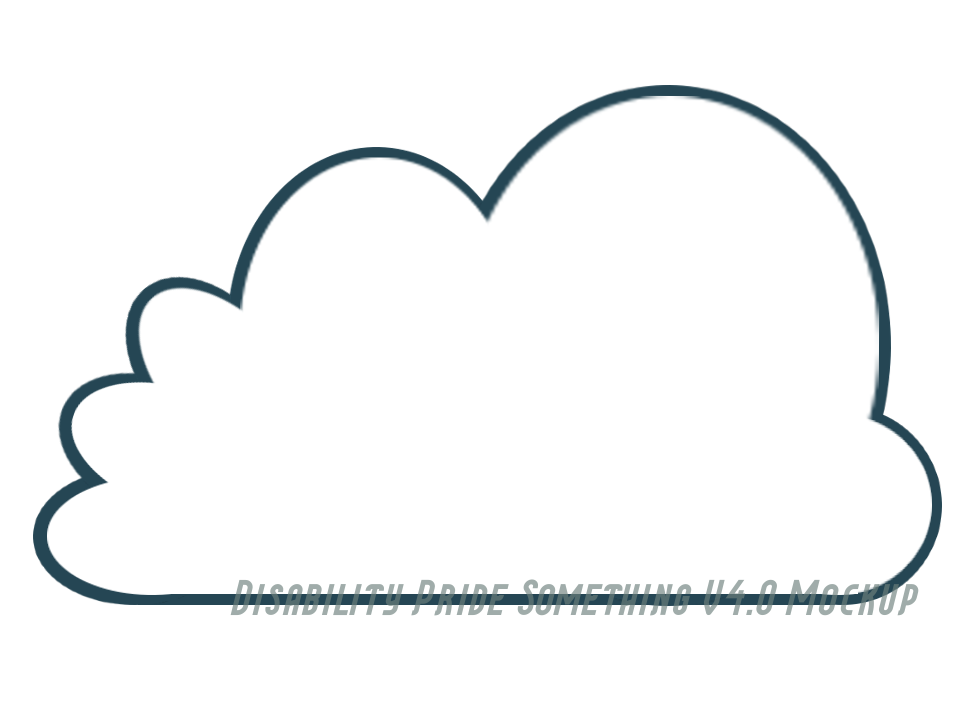
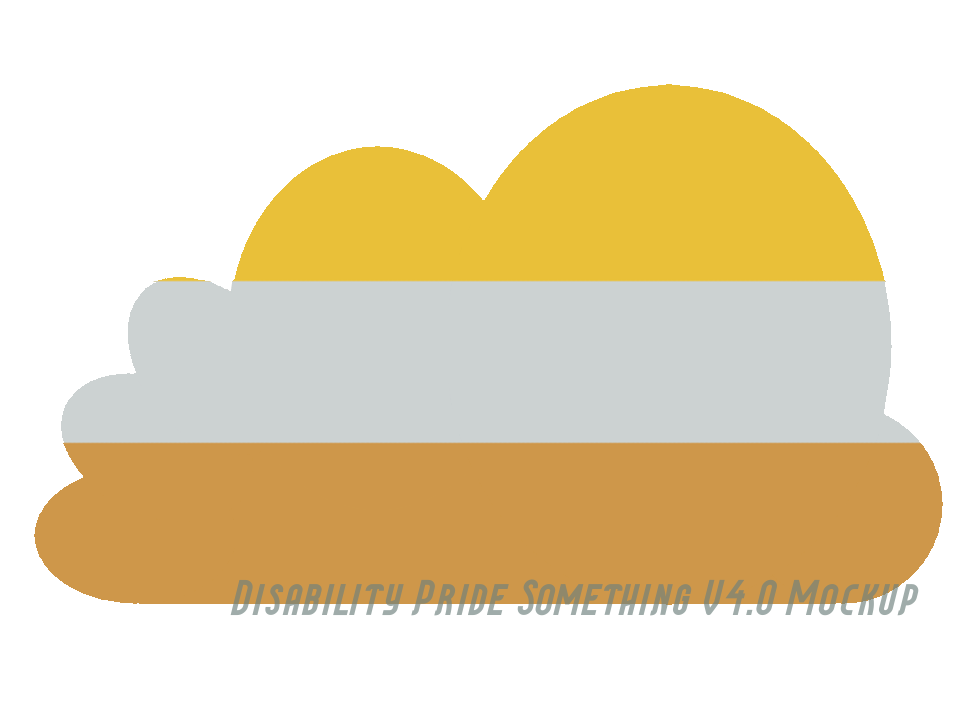

[Additional Image Description: The shape of the pride cloud is flat on the bottom and puffy on top. As it arcs from left to right, the cloud starts with three equally sized puffs, then a larger puff, then a much larger puff, and finally a smaller puff on the bottom right. End Additional Image Description.]
The default version is outlined or filled with blue-grey, and it can be drawn in different colors to use the pre-existing awareness/pride/community colors for different disabilities, e.g. green for muscular dystrophy, teal for PTSD, red for autism, white for lung cancer.

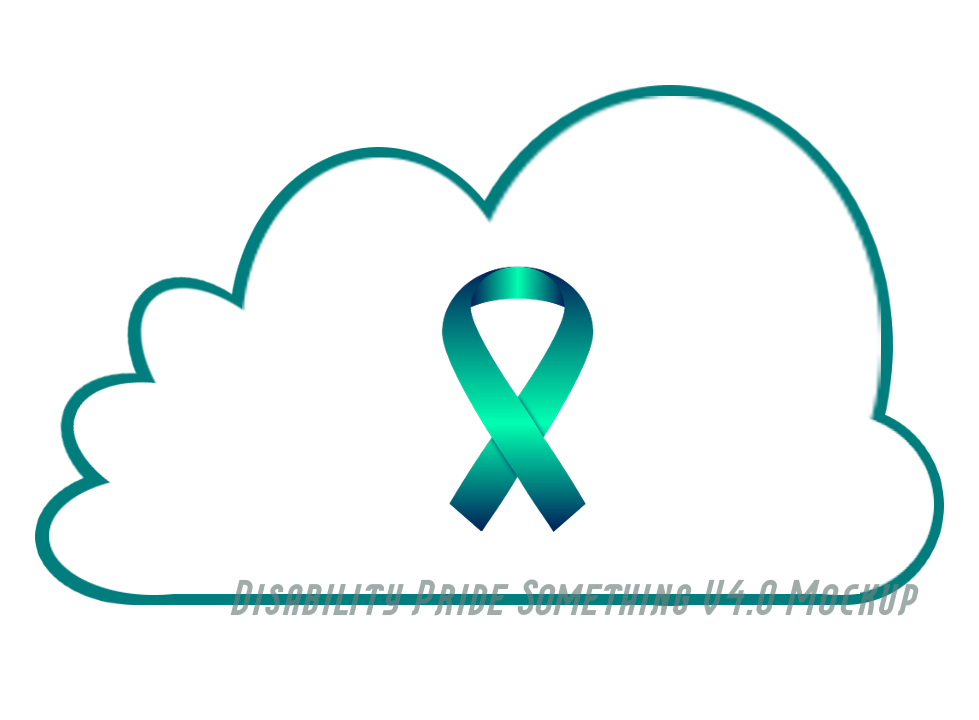
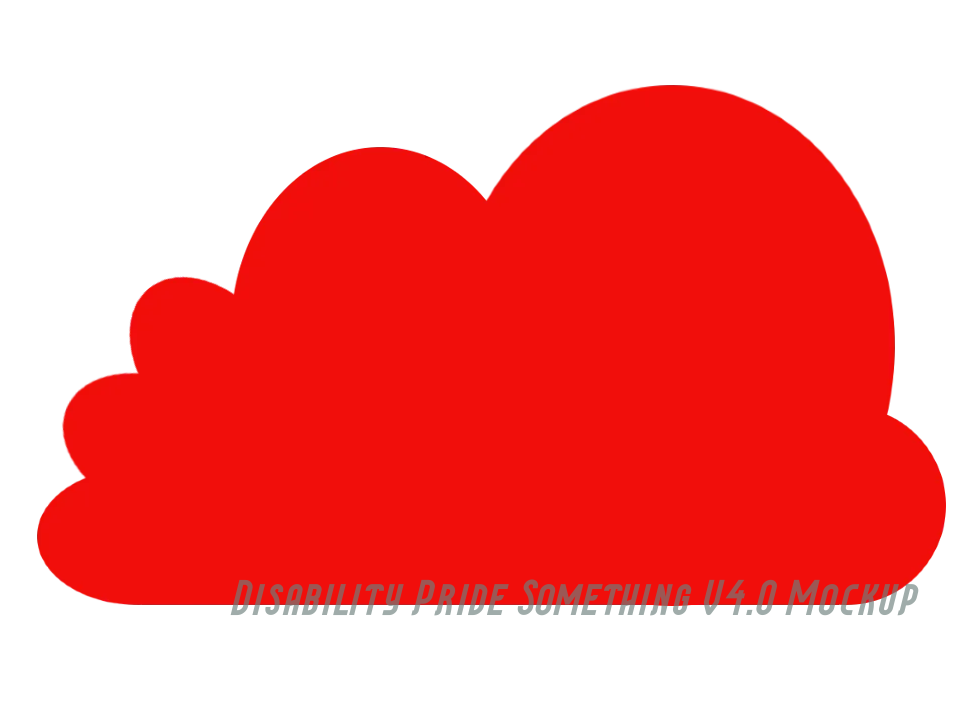
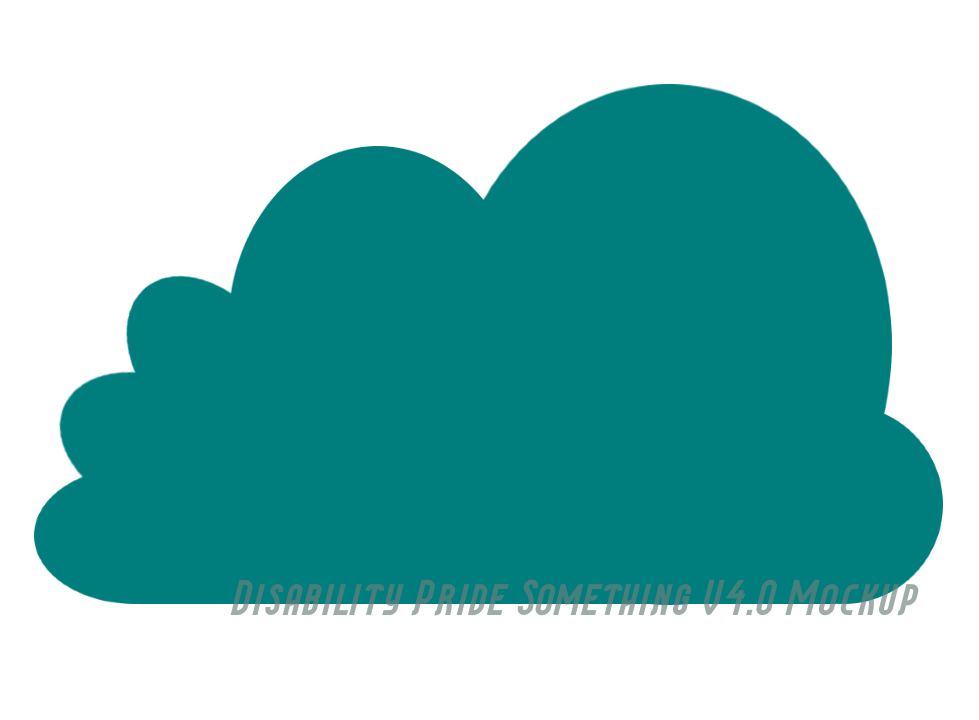
(I’m, uh, picturing calling it a “Disability Pride Cloud,” not a “Disability Pride Nimbostratus Cloud” - the Disability Pride Cloud, a nimbostratus cloud, analogous to Maine U.S.A. having a Maine State Bird, the black-capped chickadee.)
Why a cloud?
1. Clouds aren’t inherently good, bad, or neutral.
Real clouds and the weather they bring can cause immense harm, can be lifegiving, or can sometimes not affect human beings much at all.
Within the very broad tent of “the disability community,” many of us have disabilities that cause immense suffering, and urgently need treatment to cure or manage symptoms. Many of us have disabilities with aspects that we appreciate or that make us the people that we are, and don’t want to be “cured” or changed. Many of us have disabilities that bring differences and disadvantages that we don’t necessarily consider “good,” but are part of our personhood and not something we need “fixed” to be a person and live our lives. Many of us have more than one disability, or a disability that fits into more than one of these categories.
That’s part of the point of disability pride: regardless of whether our disability itself is part of our personhood or a painful condition we would choose to cure in a heartbeat or anything else, we deserve rights, dignity, and pride as disabled people.
2. Clouds are pretty universal.
To me it makes sense for a symbol of disability pride to be based on a thing that is familiar to almost everyone on Earth. Disability is ubiquitous across the world, and almost every human who lives to an older age becomes disabled at some point.
3. Because a cloud is recognizable by shape, it can be remixed!
Something that’s identifiable by shape can be drawn in different colors to use the pre-existing awareness/pride/community colors for different disabilities, e.g. green for muscular dystrophy, teal for PTSD, red for autism, white for lung cancer.
A shape is also easy to combine with the disability flags, and with other symbols of community and identity, like hometowns, symbols of religion and spirituality, and of course LGBTQIA pride flags.
To me this is especially important and one of the niches not yet filled by the ISA or disability flags because of the intersection of disability and gender. Disabled women and men are often degendered, with disabled women being seen as less feminine or not really women and disabled men being seen as less masculine or not really men. Disabled trans women, men and nonbinary people face greater barriers to trans healthcare, healthcare related to disability, safety, and community.
For many people in a lot of cultures, colors are very gendered, which was one of my personal reasons for wanting to create a symbol that can be remixed in different colors. I love the idea of wearing something for disability pride month, but it isn’t always a hop skip and a jump for me to want to wear symbolism that reads as “masculine” to me.
4. Clouds are too generic to be associated with any specific unfortunate thing.
A specific flower or animal might be associated with hate groups or who knows whatall, but any unfortunate associations of a cloud are already kind of drowned out by the logos of all the companies using “cloud” in the sense of “internet.”
Previous Versions
1.0: A cloud
My first idea, over two years ago now, was just “a cloud.” Since my starting place was the LGBTQIA pride rainbow, it almost felt too obvious at first (“You know, that other thing up there in the sky!”) But the more I thought about it, the more I liked it for the above reasons.
The main problem I could think of is that I live in the U.S.A., which has an immense problem with racism and antiblackness. Because most people here think of sunny weather as “good” and rain as “bad,” I was concerned that analogizing disability to “a cloud” would present puffy white clouds as the “good” side of disability and dark clouds as the “bad.” Not great in terms of U.S. racism and pre-existing black/white color symbolism.
(Is that a big deal? If you think it’s wrong to care about antiracism in the first place, I don’t think I’m going to convince you otherwise in a paragraph. But for “Sure antiracism is important, but the symbolism of a cloud is overthinking it” …It may or may not be overthinking it, I don’t know, but I figure if there’s ever a time to at least consider color symbolism it’s when literally talking about symbols.)
2.0: A raincloud or a cloud at night
To avert “fluffy white clouds = good” and the genericness of “a cloud,” I brainstormed a raindcloud or a cloud at night. Raincloud felt a little matchy-matchy with the gay pride rainbow. I liked the idea of a cloud at night surrounded by stars, which meshes with a lot of existing disability experiences and culture (pain-somnia, feeling like an extraterrestrial as a kid because you're different, &c). But “cloud at night” is a little weird conceptually and to verbalize.
3.0: A cloud [whose default color is blue-grey]
My next idea was to go back to “a cloud” but make the default cloud blue-grey (i.e. a raincloud). But that felt kind of gawky to explain too even if it could work in practice.
4.0 (Current): A nimbostratus cloud
I saw a gif of a lenticular cloud and went Oh, right! There are many different types of clouds, with actual names. (Yup, it took me two years to come to that realization.)
A nimbostratus cloud is a sheet or layer (stratus) of clouds that can produce rain (nimbus).
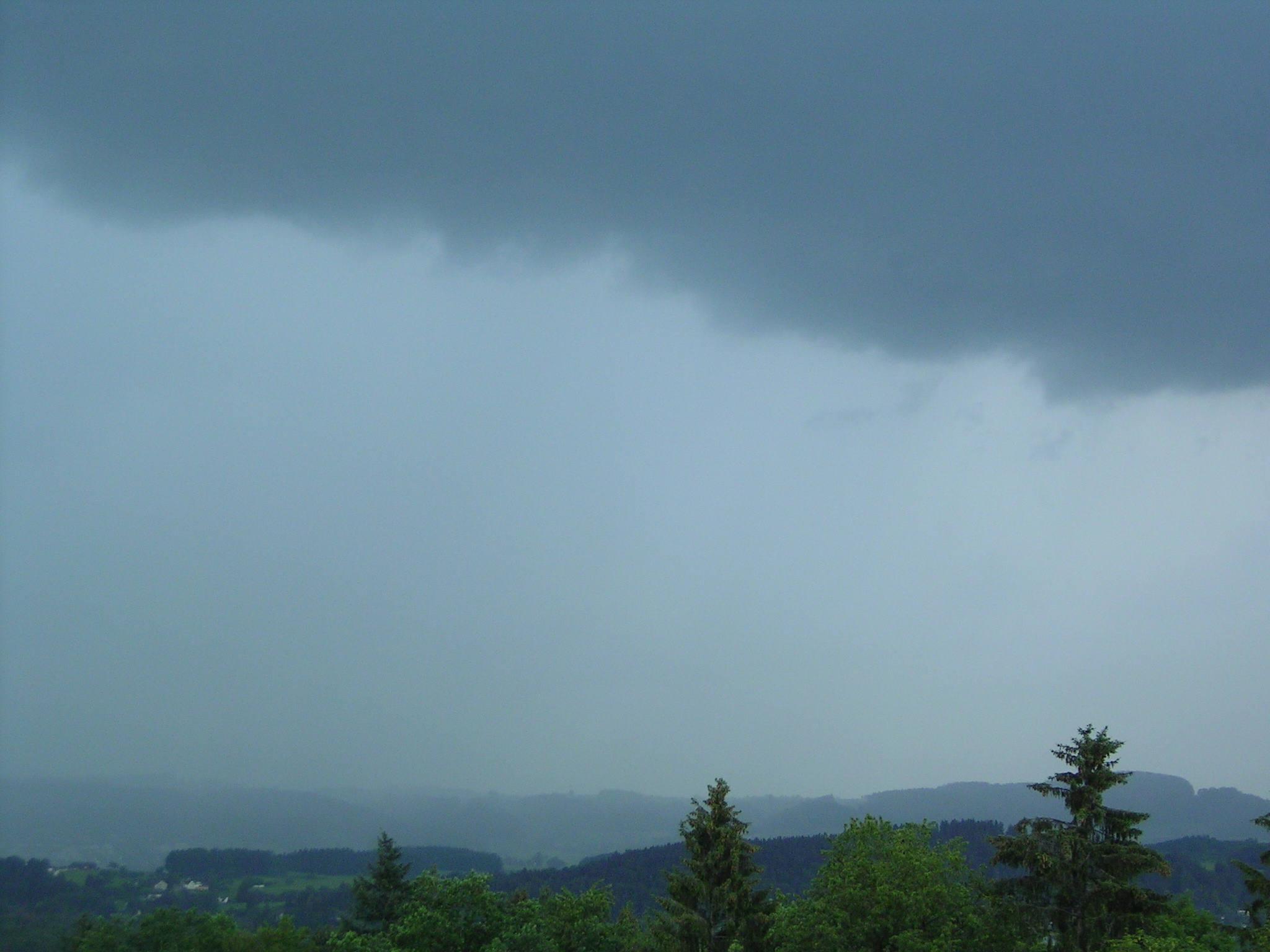
Image: Simon Eugster, licensed under the Creative Commons Attribution-Share Alike 3.0 Unported license
• A blue-grey raincloud, more or less
For the same reasons as Version 3.0 and the original “Why a cloud?” Rainclouds are recognizable as potentially harmful, lifegiving, and neutral.
• This is the internet
Avoids the cloud names with “cumulous” in them.
• Still cartoon cloud-shaped
While stratus clouds are usually flatter than cumulous clouds, they can still make more or less the puffy cartoon cloud shape.
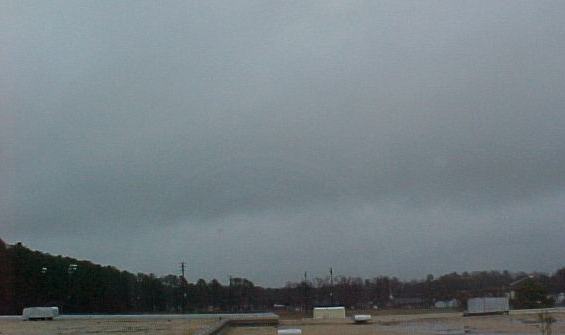
Shaped like a friend. Or an enemy. Or a frenemy.
Why a disability pride symbol in the first place?
I’m gay and I love June pride month. One thing I especially enjoy is all the art and craftworks that people make in celebration of the month and defiance of those who would harm the LGBTQIA community. When I learned that July was disability pride month, I wished there were festive symbols I could splash tackily across my body and living space in celebration. The original impulse was as silly - and proud - as that.
There’s a reason beyond fun aesthetics that I kept thinking about it for two years. The rainbow flag and all the other queer community symbols go way, way beyond aesthetics. They’re about history and personhood and solidarity and community. I can’t imagine looking back at the struggle for LGBTQIA rights over the past decades without the beautiful and unapologetic rainbow.
Part of me wonders, “Could creating more symbol(s) that represent disability pride do more harm than good? If people start using more visual symbols of disability pride, could it make non-disabled people more likely to see people with disabilities as a special-interest group to push back against, rather than people like them?”
I don’t think that’s a trivial question. I think that’s a potential downfall of visual symbols. That’s one of the reasons I’m hoping more people will have feedback and perspectives to share.
My personal kneejerk response to that fear is that, after the last few years, it doesn’t feel like it’s possible for non-disabled people’s violence toward people with disabilities to be worse.
The majority of people who died, and are still dying, in the coronavirus pandemic are disabled. Hundreds of thousands of people died needlessly because non-disabled people didn’t think that our lives have worth in the way that an abled person’s life has worth. Over the past decade, hundreds of thousands of disabled people around the world have died from non-COVID related ableism and negligence. I’m not sure there can be a “worse.”
I spent the last few weeks of June in a couple different towns where I saw a lot of signs on doors. Many doors had what I started to think of as the “Unless you’re immunocompromised” trifecta: A rainbow “All are welcome here” or progress pride flag, a Black Lives Matter sign, and a cheerful sign saying masks were not required. Other doors had signs saying “Closed due to COVID” and “Reduced hours due to COVID exposure.”
I don’t think some of us using one more symbol is going to magically fix non-disabled people’s dismissal of the worth of disabled lives any more than it’s likely to drastically make it worse. But I’m disabled and proud and I care about the survival and dignity of my community. I’d like more ways to say that to the world.
Should it be a “Disability Pride & _” cloud?
Something I’d especially hope to hear other people’s thoughts about is whether it should be a Disability Pride & [Something] Cloud. Disability Pride & Dignity Cloud? Disability Pride & Personhood Cloud? Disability Pride & Humanity Cloud? Disability Pride & Equality Cloud?
A lot of the current disability pride month cover copy is about “decreasing stigma.” I don’t disagree that decreasing stigma is important, but the concept of “decreasing stigma” feels increasingly divorced from what I and most of the disabled people I know and whose stories I hear on the news face.
Disabled people die because our lives are worth less than putting the minimum time and resources into decreasing the spread of COVID. We die when medical providers let us die because they believe being disabled means we have no “quality of life.”
We are killed by the police because stigmatized mental health conditions or homelessness mean we’re automatically thought to be dangerous.
We die from starvation, exposure, and being unable to afford medications.
We are more likely to experience domestic violence and less likely to be able to get away from the people harming us.
Often non-disabled people, from medical providers to family members to strangers, reflexively disbelieve us about the basic facts of our lived experiences.
When I think about how we need the world to change in its views of disabled people, I think of a handful of words that feel like synonyms. Dignity is survival/safety is autonomy/freedom is respect is equality is humanity. A human being who is respected won’t be degraded or left to die; a person who survives survives because they were seen as a human being deserving of healthcare; a person who is treated with dignity is safe from being left to die because a medical provider reflexively disbelieves their symptoms; a person with autonomy isn’t being coerced because they’re being treated as an equal.
(Also, I don’t want to have ten million “You’re proud of having [specific disability]? So you’re just making it part of your identity for attention?” conversations. Sometimes it’s easier to head off the potential for jerk behavior ahead of time.)
Disability Pride & Dignity Cloud? & Personhood? & Humanity? & Equality? Something else?
Personal note
Speaking of mass death:
There’s an exercise self-help workbooks give you to describe the position of your emotional pain. Is it beneath your ribs? Does it fill your mind or heart? The first time I did that after non-disability related trauma in 2017, I thought, My anger is immense. It’s the size of this building.
Then we had a pandemic. At a point when hundreds of mostly disabled children had already died, the New York Times called the number of children who had died “insignificant.” That’s another reason a cloud, or something to do with the sky, feels appropriate - my anger is the size of the universe, the size of the whole sky.
Summary/TL;DR
What is this?
A page asking for advice and feedback from the disability community in creating a symbol to fill a niche in the symbolism for disability, disability pride and disability pride month.
History
Some existing symbols are the old and new versions of the International Symbol of Access, the Disability Flag created by Eros Recios in 2017, and the Disability Pride Flag created by Ann Magill in 2019.
Disability Pride Cloud, a nimbostratus cloud
Version 4.0 of the design project I’ve been working on is the Disability Pride Cloud, a nimbostratus cloud (blue-grey raincloud). The default version is outlined or filled with blue-grey, but because it’s a shape, it can also be drawn in the existing awareness/pride/community colors for different disabilities.
Why a cloud?
Clouds aren’t inherently good, bad, or neutral. Clouds are familiar to almost everyone. Because they’re recognizable by shape, a cloud can be remixed with different symbols and colors. Cloud logos are too generic to be tied to specific unpleasant associations.
Should there be an additional word in “Disability Pride & _ Cloud?”
Both during the pandemic and unrelated to it, disabled people die because non-disabled people see us as less human and less worthy of life and dignity. We die when our lives are worth less than putting the minimum time and resources into decreasing the spread of COVID, and when medical providers let us die because they believe being disabled means we have no “quality of life.” We’re more likely to be killed by the police and to experience domestic violence. Often, non-disabled people reflexively disbelieve us about the facts of our lived experiences. I want to highlight something about the meaning of disability pride regarding disabled people’s humanity.
Some words about disabled life that feel synonymous to me: dignity is survival/safety is autonomy/freedom is respect is equality is humanity.
Would it make sense to call a cloud or other symbol a Disability Pride & Dignity Cloud? & Personhood? & Humanity? & Equality? Something else?
Footnotes
¹I’m not a big fan of the ISA for the usual reasons others have articulated, but there’s a difference between an accessibility symbol and a disability pride symbol and that’s probably its own conversation.
²One reason I felt ready to pitch this this year is that I’m in the process of starting a small silkscreening business, and while my focus is elsewhere (logo/band t-shirts for musicians!), I want to print LGBTQIA pride shirts. Especially when I thought I might be up and running by July (dubious), I also wanted to print some shirts for disability pride month, which threw me back on the question of images and symbols. “I can print shirts with this on it!” felt like a more coherent reason for this to be the year to work on sharing this than the less quantifiable reasons like anger and grief.
Of course, potential t-shirts open me up to the accusation that I’m just trying to make a buck - and while it’s easy to mention that hypothetical accusation flippantly in the context of t-shirt printing, it’s actually a serious question when it comes to something like this webpage! Businesses who couch their promotions in terms of being a social movement are gross, and I don’t want to be that person. All I can say is that my intention is for any graphic that comes out of this discussion to be something by and for the disability community, released either public domain or with a Creative Commons license for free commercial and personal use. If people like the cloud idea enough to start using it, I will be beyond excited if other people sell items and objects too.
³Comment woes backstory: I thought I’d be able to set up comments using a widget, but the only ones I can find are old enough that I don’t feel great about encouraging people to put identifying information in them. I haven’t done web admin stuff in years and it’ll take me days or more to set up reasonably secure comment hosting myself. Suggestions welcomed.
4Tumblr anons aren’t actually anonymous if the recipient doesn’t want them to be, but they do avert the problem of an older widget having to hang on to a list of comments and IP addresses.
Comments
For reasons I’ll put in a footnote for anyone interested (or who has suggestions)³, I’m not going to be able to implement a reasonably functional commenting system for days or more. I don’t want to use a dodgy workaround or lean on friends and mods on social media to host everything feedback-related even if I am asking for feedback elsewhere, so in the tradition of ridiculous tech workarounds:
1. Email comment to disabilitypridesomething /at\ gmail - feel free to use a temp email address since it just needs to get the comment in, include a display name if you want one, hate will be filtered and deleted, &c. I’ll post comments here.
Specify if you do NOT want your comment posted, otherwise I will consider everything sent to disabilitypridesomething a public comment.
2. Quicker option: I don’t have a discussion page for this set up on Tumblr (yet), but its anonymous asks are usually reliable and you don’t need to be logged in to send one. Send an “anonymous” comment here,4 include a display name if you want one, and I’ll post it to this page as a comment.
Sending is easy - type, check the CAPTCHA box, and hit submit - but avoid using “<” since that can erase them.